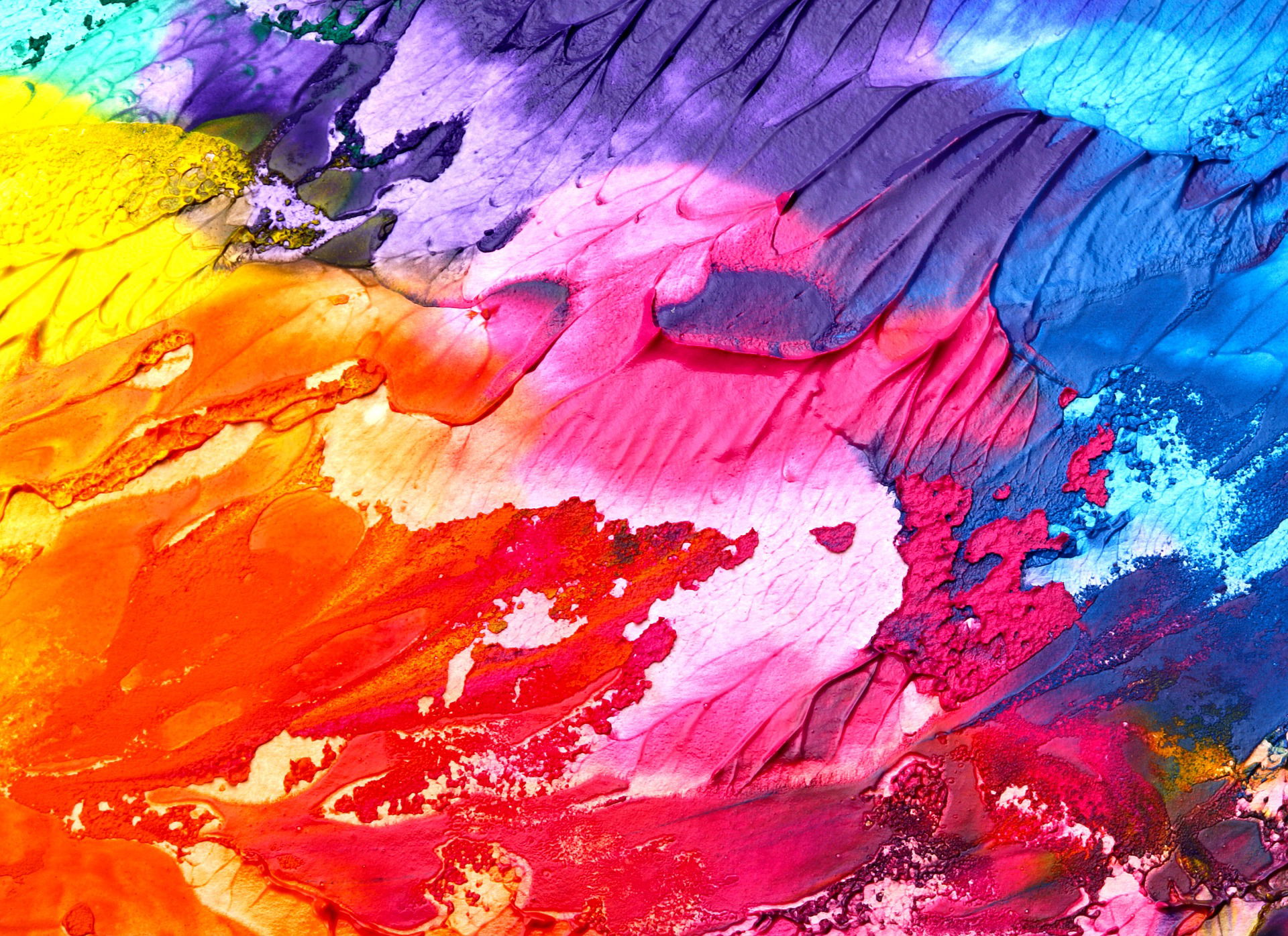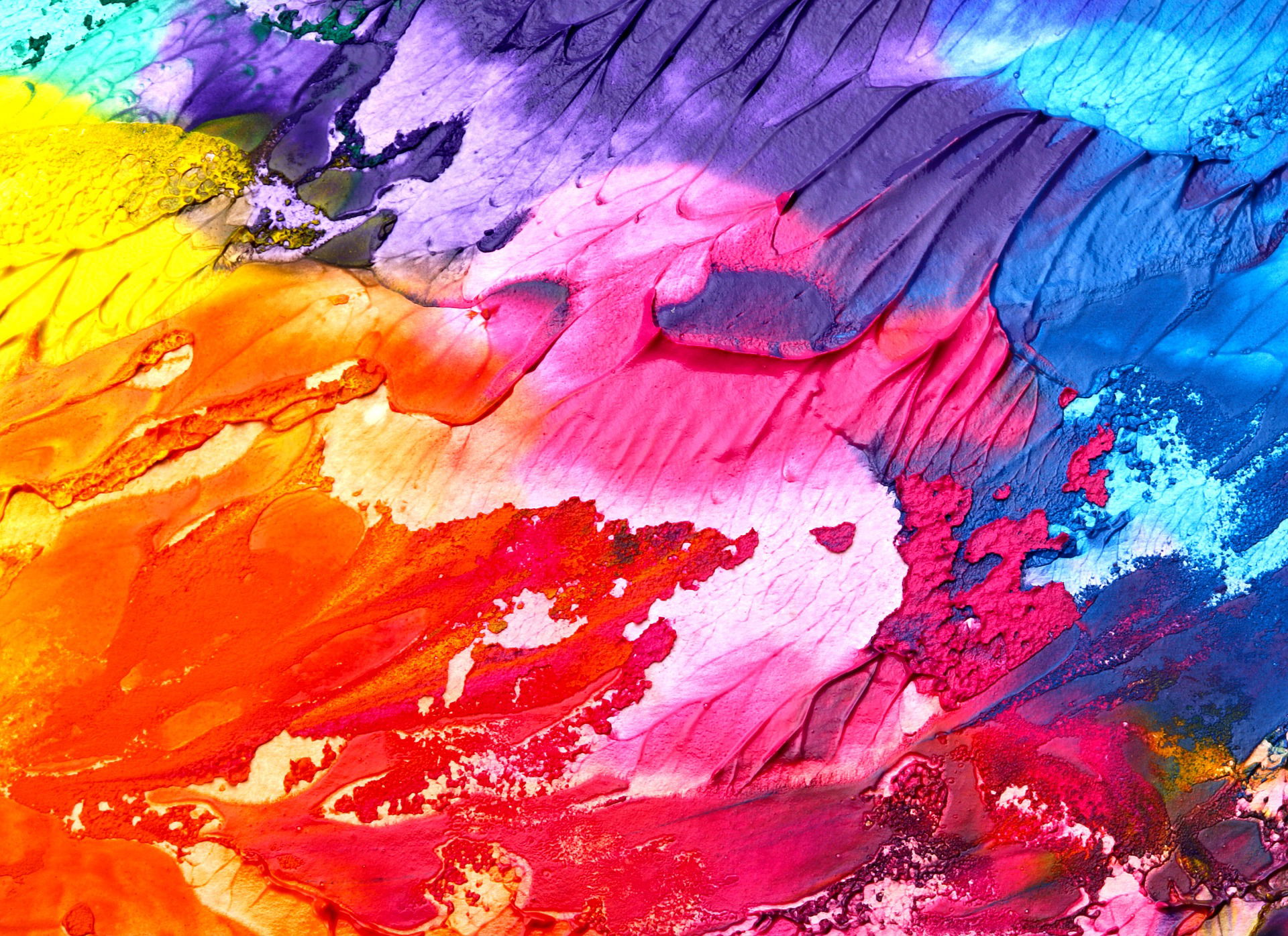Unlocking the Secrets of Color: A Journey Through Basic Color Theory and Schemes

Key Features:
- Comprehensive Overview of Color Theory:
- The article provides an extensive introduction to color theory, starting with the basics of the color wheel, including primary, secondary, and tertiary colors. It delves into how these colors interact on the wheel, setting the stage for understanding more complex color relationships and schemes.
- Color Harmony and Schemes:
- Different color schemes are explored to show how colors can be combined to create visually appealing and cohesive looks. These schemes include monochromatic, analogous, complementary, and triadic, each discussed with examples of how they can be applied in various settings, enhancing both aesthetics and mood.
- Psychological Impact of Colors:
- The article discusses the emotional effects of colors, explaining how different hues can influence feelings and behaviors. This section helps readers understand why certain colors are better suited for specific rooms or purposes based on the psychological impact they are known to have.
Basic Color Theory and Schemes
Welcome to a World Where Colors Come Alive! Hello to all who find joy and wonder in the world of colors! At Lightmen Painting, we're setting off on an in-depth exploration of color theory, a journey that is as enlightening as it is colorful. Whether you're a professional painter, an aspiring designer, or just someone who adores the myriad shades and hues of the world, a deep understanding of color theory is essential. Let's delve into the vibrant and dynamic world of colors to discover how they interact, influence our emotions, and shape our experiences.
"I love painting projects so much that I once painted a room the same color it already was, just for the thrill of it!"
The Foundations of Color Theory from a Residential Painter's Perspective
Understanding the Color Wheel:
The color wheel is a fundamental tool in color theory, showcasing a spectrum of colors in a circular layout.
It typically consists of primary colors (red, blue, yellow), secondary colors (green, orange, violet), which are created by mixing primary colors, and tertiary colors, which result from mixing primary and secondary colors.
Color Harmony: Creating Cohesive Spaces
Monochromatic Magic and Beyond
Creating a harmonious space doesn't mean sticking to one note. Monochromatic schemes, using various shades of a single color, can add depth and interest without overwhelming the senses. But let's not shy away from more dynamic schemes like complementary or triadic, which we often achieve with the diversity of Sherwin Williams colors. Imagine a room that perfectly balances blues and oranges, or a space that joyfully combines greens, violets, and oranges.
Analogous
Colors next to each other on the wheel, creating a harmonious and serene atmosphere.
Complementary
Opposite colors on the wheel, providing a high-contrast and vibrant feel.
Triadic
Three colors evenly spaced around the wheel, offering a balanced and dynamic energy.
Warm and Cool Tones: Setting the Mood
The temperature of a color can dramatically alter the feel of a room. Warm Sherwin Williams colors can make a large, sparse room feel cozier, while cool tones can make a small space seem more open and airy. It's all about using color to achieve the desired emotional and visual effect.
The Psychological Impact of Color
Beyond aesthetics, colors influence how we feel. A Sherwin Williams blue might be just what you need for a calming home office, or a vibrant red for a lively dining area. Understanding these effects is key to selecting the right colors for your home.
Lighting: The Color Chameleon
Always consider how light affects color. The same Sherwin Williams paint can look entirely different under the warm glow of a lamp versus natural sunlight. Testing colors at different times of the day ensures you’ll love your choice in any light.
Trends vs. Timelessness
While it's tempting to chase the latest color trends, at Lightmen Painting, we believe in choices that reflect your personal taste and the architectural style of your home. Whether it's a timeless neutral or a bold accent wall with the latest Sherwin Williams hue, the goal is to create a space that feels right for you.
The Color Wheel: A Residential Painter's Palette
Primary Colors (Red, Blue, Yellow):
- These are the foundational colors that cannot be created by mixing other colors.
- Red brings warmth and energy; it can create a focal point in a room.
- Blue is associated with calmness and serenity, often used in bedrooms and bathrooms.
- Yellow, the brightest of the primary colors, evokes a sense of cheerfulness and is great for kitchens and living rooms.
- Understanding the impact of each primary color is crucial in creating a desired mood and atmosphere in a space.
Secondary Colors (Green, Orange, Violet):
- Formed by mixing two primary colors in equal parts.
- Green results from mixing blue and yellow. It's a refreshing color that brings a sense of nature and tranquility into a home.
- Orange, a blend of red and yellow, is a vibrant and energetic color, often used in spaces where interaction and activity occur.
- Violet, created from red and blue, adds a touch of elegance and sophistication. It’s frequently used in bedrooms and living areas for a luxurious feel.
- Secondary colors add diversity and complexity to a painter's palette, allowing for more nuanced color schemes.
Tertiary Colors:
- These are created by mixing a primary color with a secondary color adjacent to it on the color wheel.
- Examples include red-orange, yellow-green, and blue-violet. Each tertiary color has a unique character and can be used to create more subtle and complex paint schemes.
- Tertiary colors are often used to achieve specific shades that complement a home's decor, furnishing, and overall style.
Just as a treasure hunter deciphers clues to uncover hidden gems, delving into the depths of a problem to unearth its root cause is crucial. Like Lightmen Painting, I've seen that understanding the true origin of a conflict is the first step in crafting an effective solution.
Understanding Color Relationships in Residential Painting
The Foundation
Harmonious Living with Benjamin Moore
When we talk about color harmony, we're referring to the visually pleasing experience created by combining certain colors. Imagine the serene ambiance of a bedroom painted in Benjamin Moore's tranquil blues and greens, invoking a sense of calm and relaxation that beckons you to unwind.
Bringing Nature Indoors
One of my favorite anecdotes involves a project where we transformed a bustling family living room into a sanctuary of peace. Using a blend of Benjamin Moore's soft greens with subtle blue accents, we mirrored the tranquility of the great outdoors, right inside their home.
The Dynamics of Contrasting Colors
Energizing Spaces with Bold Contrasts
Contrasting colors, those opposite on the color wheel, bring a room to life. Think of the vibrant energy of a kitchen painted in Benjamin Moore's warm reds against cool green backsplash tiles - stimulating conversation and appetite in equal measure.
A Kitchen That Cooks Up Conversations
Recalling a kitchen makeover, we chose Benjamin Moore's Caliente AF-290 against a backdrop of Hunter Green 2041-10. The result? A space that buzzes with energy, perfect for family gatherings and gourmet adventures.
Exploring Color Schemes for Every Mood
Monochromatic Elegance
A monochromatic scheme, utilizing shades and tints of a single color, offers a cohesive and sophisticated look. Envision a home office painted in varying shades of Benjamin Moore's blues, each adding depth and focus to the workspace.
Analogous Harmony
Next to each other on the wheel, analogous colors create a unified and soothing environment. I once designed a living room with hues of Benjamin Moore's yellows leading into gentle greens, crafting a space that felt both welcoming and vibrant.
Complementary Creativity
For areas needing a dash of excitement, complementary colors make a bold statement. A child’s playroom in vivid Benjamin Moore blue and orange not only stimulates creativity but also stands as a testament to the joy of color.
The Benjamin Moore Difference
What sets Benjamin Moore apart in the world of color is not just the quality of their paint but the depth and richness of their hues. Each color is designed to reflect light beautifully, ensuring that every room not only looks good but feels good.
Choosing Your Palette
When selecting colors for your home, consider the mood, function, and lighting of each room. With Benjamin Moore's extensive palette, the possibilities are endless, but the goal remains the same: to create spaces that resonate with the heart.
Lighting: The Great Influencer
Remember, lighting plays a pivotal role in how colors are perceived. Test Benjamin Moore samples in different lights to ensure you capture the exact vibe you're aiming for, be it the glow of dawn or the soft luminescence of dusk.
Trends vs. Timelessness
While it's exciting to explore trending colors, there's beauty in choosing hues that speak to you personally. Benjamin Moore colors are crafted to stand the test of time, ensuring your space remains as timeless as it is trendy.
In Our Experience:
"It's truly amazing what a fresh coat of paint can do for your home and business. Color absolutely affects mood so do your research on what mood you want in your home and give it a fresh coat. If we are talking your business, fist impressions are everything and a fresh coat of paint is like wearing all new clothes to an interview."
Practical Applications of Color Theory in Residential Painting:
The implementation of color theory in residential painting is more than just choosing appealing shades; it's a strategic approach to creating environments that enhance the livability and aesthetic of a home. Let's delve deeper into the practical applications of color theory in residential painting, the creative freedom it allows, and the overall impact on home aesthetics.
Setting the Mood with Color:
- Colors have the power to evoke emotions and set the tone of a room. For example, cool blues and greens are often used to create a calming and relaxing atmosphere, ideal for bedrooms or bathrooms.
- Warmer tones like reds and oranges can generate energy and excitement, suitable for social spaces like living rooms and kitchens.
Adding Depth and Dimension:
- Lighter colors can make a room feel more spacious, while darker colors can add coziness and intimacy.
- Using contrasting colors or different shades of the same color can create visual depth and highlight architectural features.
Harmonizing Spaces:
- Color can be used to create a sense of continuity throughout a home. This doesn’t mean using the same color everywhere, but rather ensuring a cohesive flow from room to room.
- Transitioning between colors of similar saturation or temperature can help maintain a unified feel.
Impact on Interaction within Spaces:
- The choice of colors can influence how people interact within a space. For instance, vibrant colors in a dining area can stimulate conversation and appetite, while soothing tones in a living room can encourage relaxation and calmness.
Breaking the Rules: Creative Freedom in Painting:
- While understanding color theory is important, breaking away from conventional rules can lead to unique and personalized interiors.
- Experimenting with unexpected color combinations or unconventional applications (like a brightly colored ceiling or an accent wall in a bold hue) can add character and uniqueness to a space.
The Foundation: Understanding Color Harmonies
Harmonious Living with Benjamin Moore
When we talk about color harmony, we're referring to the visually pleasing experience created by combining certain colors. Imagine the serene ambiance of a bedroom painted in Benjamin Moore's tranquil blues and greens, invoking a sense of calm and relaxation that beckons you to unwind.
Bringing Nature Indoors
One of my favorite anecdotes involves a project where we transformed a bustling family living room into a sanctuary of peace. Using a blend of Benjamin Moore's soft greens with subtle blue accents, we mirrored the tranquility of the great outdoors, right inside their home.
The Dynamics of Contrasting Colors
Energizing Spaces with Bold Contrasts
Contrasting colors, those opposite on the color wheel, bring a room to life. Think of the vibrant energy of a kitchen painted in Benjamin Moore's warm reds against cool green backsplash tiles - stimulating conversation and appetite in equal measure.
A Kitchen That Cooks Up Conversations
Recalling a kitchen makeover, we chose Benjamin Moore's Caliente AF-290 against a backdrop of Hunter Green 2041-10. The result? A space that buzzes with energy, perfect for family gatherings and gourmet adventures.
Exploring Color Schemes for Every Mood
Monochromatic Elegance
A monochromatic scheme, utilizing shades and tints of a single color, offers a cohesive and sophisticated look. Envision a home office painted in varying shades of Benjamin Moore's blues, each adding depth and focus to the workspace.
Analogous Harmony
Next to each other on the wheel, analogous colors create a unified and soothing environment. I once designed a living room with hues of Benjamin Moore's yellows leading into gentle greens, crafting a space that felt both welcoming and vibrant.
Complementary Creativity
For areas needing a dash of excitement, complementary colors make a bold statement. A child’s playroom in vivid Benjamin Moore blue and orange not only stimulates creativity but also stands as a testament to the joy of color.
The Benjamin Moore Difference
What sets Benjamin Moore apart in the world of color is not just the quality of their paint but the depth and richness of their hues. Each color is designed to reflect light beautifully, ensuring that every room not only looks good but feels good.
Choosing Your Palette
When selecting colors for your home, consider the mood, function, and lighting of each room. With Benjamin Moore's extensive palette, the possibilities are endless, but the goal remains the same: to create spaces that resonate with the heart.
Lighting: The Great Influencer
Remember, lighting plays a pivotal role in how colors are perceived. Test Benjamin Moore samples in different lights to ensure you capture the exact vibe you're aiming for, be it the glow of dawn or the soft luminescence of dusk.
Trends vs. Timelessness
While it's exciting to explore trending colors, there's beauty in choosing hues that speak to you personally. Benjamin Moore colors are crafted to stand the test of time, ensuring your space remains as timeless as it is trendy.
The practical application of color theory in residential painting goes far beyond aesthetics. It's about creating environments that not only look beautiful but also feel right for the people living in them. By skillfully applying color theory principles, and sometimes even defying them, residential painters and homeowners can craft spaces that are not only visually stunning but also deeply resonant with personal style and emotional well-being.
Do You Have Questions? Give Us A Call With Any & All 503-389-5758
-
People Also Ask
How does the color wheel aid in understanding color theory in residential painting?
The color wheel is a crucial tool in color theory, acting as a visual representation of colors arranged according to their chromatic relationship. It includes primary colors (red, blue, yellow), secondary colors (green, orange, violet) made by mixing primary colors, and tertiary colors, which are combinations of primary and secondary colors. In residential painting, the color wheel helps in creating harmonious color schemes by guiding the selection of complementary, analogous, or triadic color combinations, thereby enhancing the aesthetic appeal and emotional impact of living spaces.
What is the importance of color temperature in setting the mood of a room?
Color temperature plays a significant role in setting the mood of a room. Warm colors, such as reds, oranges, and yellows, create a sense of coziness and vibrancy, making spaces feel more intimate and inviting. Cool colors, like blues, greens, and purples, evoke calmness and serenity, making them ideal for creating a tranquil and relaxing atmosphere. The choice of warm or cool tones can dramatically alter the perceived size and ambiance of a room, influencing the emotions and behavior of its occupants.
How does lighting affect the perception of paint colors in a home?
Lighting significantly affects the perception of paint colors in a home by altering their appearance and intensity. Natural sunlight can reveal the true color of paint, while artificial lighting can shift its hue, saturation, and brightness. Warm lighting can enhance warm colors and soften cool colors, whereas cool lighting can make cool colors appear more vivid and alter the appearance of warm colors. Testing paint colors under different lighting conditions—natural light throughout the day and artificial light in the evening—is essential for ensuring that the chosen color will look as intended in any light, thus achieving the desired mood and effect in the space.
-
SUBSCRIBE TO OUR BLOG: Stay informed with the latest in Painting and DIY projects by subscribing to Lightmen painting. Get insights, tips, and more delivered straight to your inbox. We would also love to know what you would like to read about, leave thoughts on where we should go next. Interests, Topics, Ideas, all are welcome.
"In the palette of life, your choices of colors reflect not just your project, but your perspective. Choose boldly, paint bravely."
If your in the Portland, Or. area and need advice or a free no obligation estimate call us at 503-389-5758 or email scheduling@lightmenpainting.com
Shout Out
Exceptional Service with That 1 Painter
At Lightmen Painting, we admire companies that embody professionalism and care, which is why we recommend That 1 Painter. Their dedication to delivering high-quality residential and commercial painting services aligns perfectly with our own commitment to excellence. With a focus on customer satisfaction and craftsmanship, That 1 Painter transforms spaces beautifully.
Explore their offerings at That 1 Painter and discover how they can elevate your next project with expert service!
Lightmen Painting Serving: Portland, Tigard, Lake Oswego, Tualatin, West Linn, Milwaukie, Sherwood, Happy Valley, Oregon City, Beaverton, Hillsboro, Gresham

